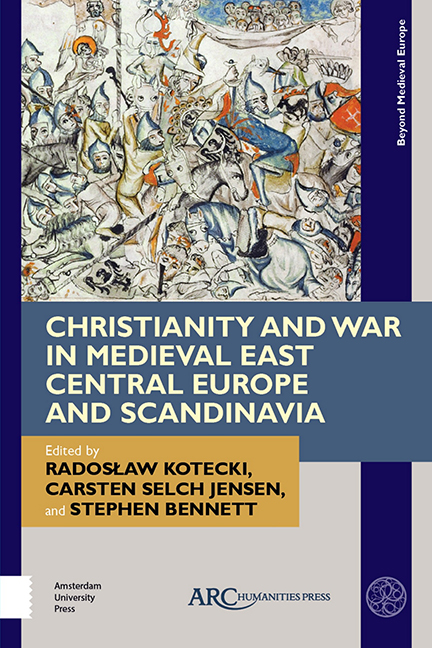Chapter 3 - The Image of “Warrior-Bishops” in the Northern Tradition of the Crusades
Published online by Cambridge University Press: 27 May 2021
Summary
ONE OF THE most interesting confluences in the myth-history of the Crusades is the strong presence of an aristocratic “warrior-bishop” in the chronicles, chansons de geste (songs of deeds), and legends alike. Despite the ban on clerical fighting, militant bishops are especially prominent in the crusaders’ chansons. The chronicles take a more conciliatory stance between the doctrinal prohibition and epic narrative. In them, the bold bishop is described leading troops into battle, exhorting crusaders with eloquent preaching, and maintaining the moral strength of the army. With few exceptions, silence falls over the possibility of active clerical participation in bloodshed.
This study explores the image of warrior-bishops in the northern conversion narratives of the Baltic Sea region. The research material consists of historical sources and hagiographical legends concerning bishops Meinhard (d. 1196), Berthold (d. 1198), and Albert of Livonia (d. 1229), as well as Bishop Henry of Finland, whose historical existence has been disputed (alleged d. ca. 1154/ 1155). It is no coincidence that all four were members of higher clergy. Charismatic preachers among the lower clergy, even those with a strong following, were never able to win a leading role in the historiography of the Crusades. In newly conquered areas, where the Western ecclesiastical, military, and fiscal authorities were gradually displacing native power structures, missionary bishops set an example.
Research Subjects
The first of the Livonian bishops, Meinhard (d. 1196) came from the Augustine monastery of Segeberg. He travelled to Livonia with German merchants, built a stone church and a fortification in Üxküll, and preached among the Livonians. He was consecrated the bishop of Üxküll in 1186 by Hartwig II, the archbishop of Bremen, and died a decade later in that position. Posthumously, he was praised for his clemency and mildness despite the fact that he had erected a stronghold and encircled the episcopal household with men in arms.
Both of his successors became deeply involved in military activities. Bishop Berthold, a Cistercian abbot from the monastery of Loccum, arrived with armed crusaders and was killed in battle soon thereafter in 1198. After him, Hartwig sent his nephew, Albert of Buxhoevden (d. 1229), to Livonia.
- Type
- Chapter
- Information
- Publisher: Amsterdam University PressPrint publication year: 2021



